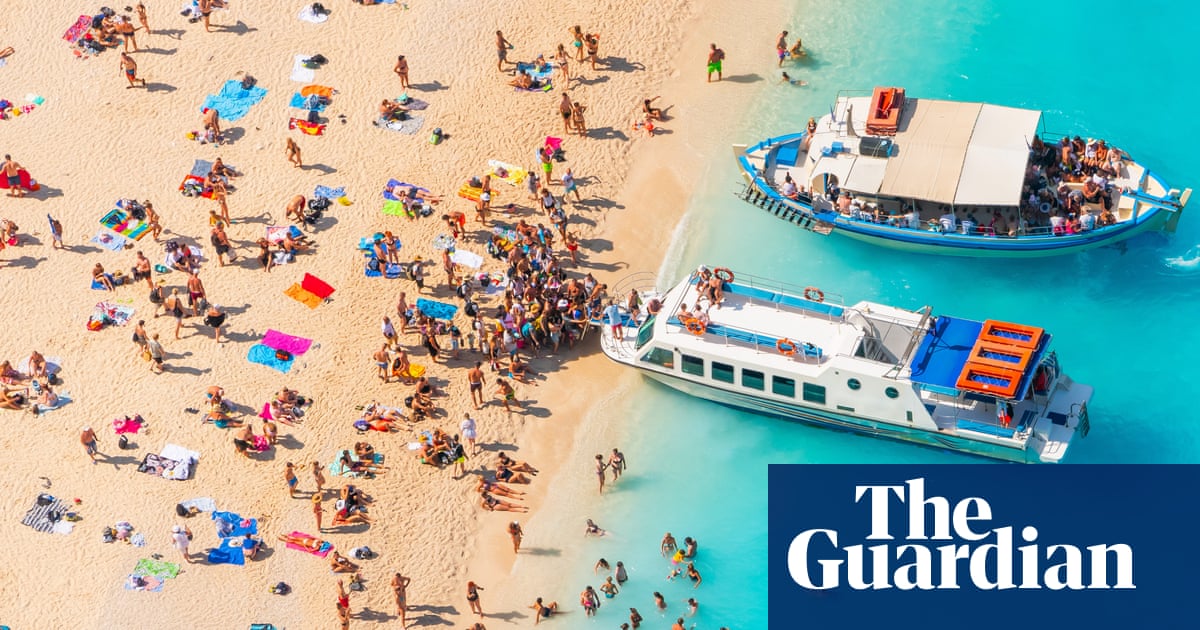In Great Yarmouth there are some signs of regeneration: the vast glass palace of the Winter Gardens is being refurbished and the ornate Cafe 1903 next to the historic Hippodrome is busy. But the bustling tourist industry of the Edwardian era is long gone. “When Buffalo Bill’s Wild West Show came in 1903, the tent held 5,000,” says local historian Roger Silver. “A couple of years earlier the Bass Brewery brought 10,000 workers on a day trip from Burton upon Trent. It took 16 trains.”
Coincidentally, that is the same number of visitors who poured into the Italian mountain village of Roccaraso (population 1,500) in January, drawn by the presence of Tik Tok influencer Rita de Crescenzo. But the similarities end there. The Yarmouth invasion received no complaints, while the residents of Roccaraso reacted with horror. The mayor, Francesco Di Donato, threatened to call in the army.
What was once a holiday crowd, it seems, is now overtourism. “It has overwhelmed some of Europe’s most popular destinations,” says Rory Boland, editor of Which? Travel, whose new report details the powerful pressure that visitors are having on destinations around the continent. The award for most tourist-crowded resort goes to the Greek island of Zante (Zakynthos) where overnight stays outnumber residents 150 to one. Elsewhere, Mallorca takes the prize for most overnight stays while Paris tops the tourist density index with a whopping 418,000 stays per sq km – vastly surpassing its nearest rival, Athens.
“It’s clear that some feel a tipping point has been reached,” says Boland. “The negative side of a booming tourist trade – whether that’s increasing house prices, antisocial behaviour or pressure on local services – is outweighing the benefits.”
The term “overtourism” may be relatively new but, as Prof Richard Butler of the University of Strathclyde points out: “Complaints about the impacts of crowds of tourists go back well over a century, certainly in the case of Venice at least.” For some destinations, he argues, the real issue is undesirable behaviour and nuisance. “Long-established places like Blackpool, Las Vegas and Orlando do not appear to experience complaints of overtourism. They essentially grew up with tourism being the only game in town, and their growth and focus has always been on tourism.”
The problem is in locations that are new to the experience, and for whatever reason cannot cope. Old cities such as Dubrovnik and Prague are suffering. But sometimes, Butler argues, the wounds can be self-inflicted. “Barcelona is one of the major sites of overtourism complaints to the media,” he says. “But it deliberately focused on tourism as a source of redevelopment, kicking off with the 1992 Olympic Games.”
Marketing campaigns can be slow to adjust. The second most crowded tourist resort in Europe, according to the Which? report, is Istria in Croatia, still regularly referred to as the country’s “best-kept secret”. Which? suggestions of how best to avoid the crowds focus largely on eastern European destinations that get few visitors: Rybnik in Poland, Severoistočen in North Macedonia and parts of Romania.
Mircea Crisbășanu, who operates biking tours in Romania, says the south is very quiet. “Some villages have beautiful traditional architecture and the people are very friendly.”
The least visited option in all of Europe, with zero visitors, is the Norwegian island of Jan Mayen. Being well inside the Arctic Circle and with special permission required to visit, it remains an unlikely holiday destination.
Back in Great Yarmouth, Roger Silver is standing on the Haven Bridge looking down quaysides that once hummed with activity. “We would love more cruise ships,” he says, a little wistfully.
after newsletter promotion
Which? Travel’s busiest and quietest travel spots
Highest tourist pressure (tourists per 1,000 residents)
Zante (Zakynthos), Greece: 149,887
Istria county, Croatia: 133,467
Fuerteventura, Canary Islands: 118,720
Lowest tourist pressure (tourists per 1,000 residents)
Targovishte, Bulgaria: 332
Rybnik, Poland: 351
Benevento, Italy: 398
Highest number of tourists per sq km
Paris: 418,280
Central Athens: 88,535
Copenhagen: 63,944
Lowest number of tourists per sq km
Jan Mayen, Norway: 0
Teleorman, Romania: 1.21
Svalbard, Norway: 2.4
Most overnight stays
Mallorca: 51,193,029
Paris: 43,919,010
Rome: 41,135,744
Least overnight stays
Jan Mayen: 0
Teleorman: 6,983
Zasavska, Slovenia: 22,990
